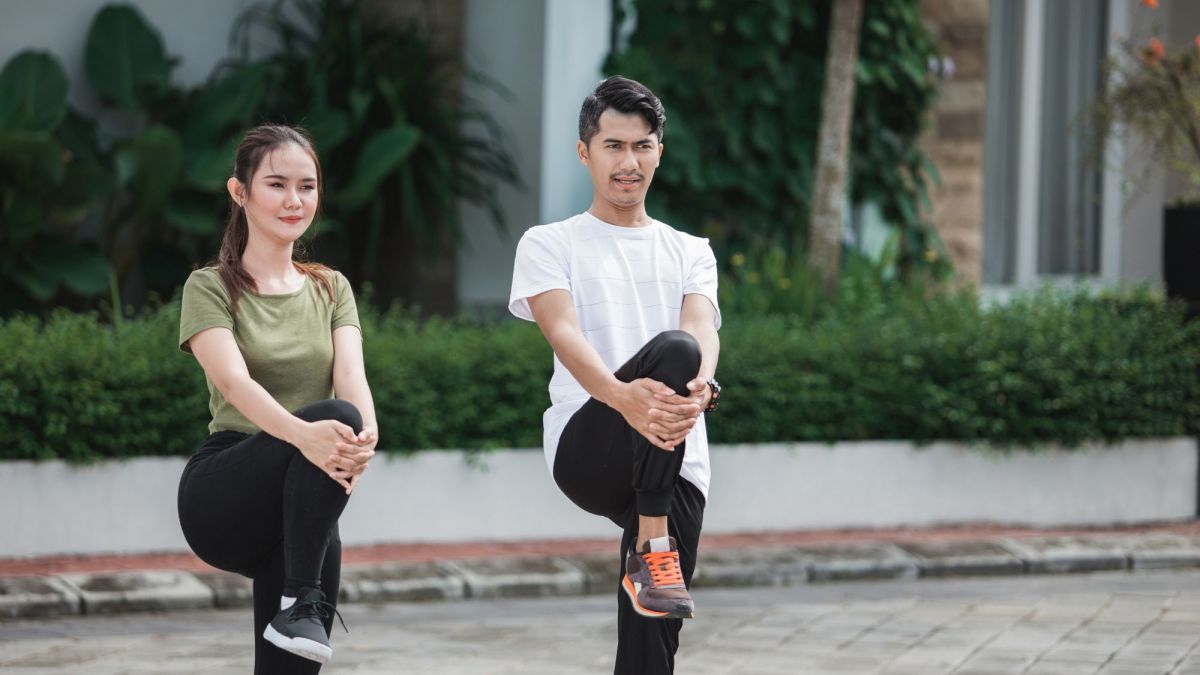Correlation Between Fitness and Academic Achievement

Abstract
The benefits from regular physical activity have long been proven. Much research lately has been focused on the positive correlation between physical fitness and academic achievement.
With the focus from school districts being on standardized test scores, and time for instruction being found by getting rid of extracurricular activities and other programs not directly assessed, this is a critical time for finding a solution without losing the students in the midst of it. Stress levels are rising in our students and there is an ever increasing pressure from schools for students to perform well on standardized tests and achieve more academically every year, along with increasing sickness, absenteeism, behavior problems and multiple hyperactivity and attention deficit disorders on the rise. The health of our students needs to be the utmost priority to battle stress, illness and even obtaining academic achievement and increasing test scores.
A great deal of research has been done and is available showing the health benefits of regular physical activity, including stress relief, greater memory, focus and concentration and even self-confidence. In turn, these provide children with the weapons needed to go up against standardized tests and the many other stressors thrown their way on a daily basis. On account of the proven importance of physical activity and the increasing stress levels, educational demands, and chronic health conditions, it is essential to take into account the physical, social, and cognitive benefits of physical activity for these children.
Introduction
For years, there has been an increased demand on teachers to improve academic performance in their classrooms. With the introduction of the No Child Left Behind Act of 2001, a new educational program based on “accountability for results, more choices for parents, greater local control and flexibility, and an emphasis on doing what works based on scientific research” (U.S. Department of Education 2007), standardized testing in schools has become the absolute focus in determining academic achievement, even in liew of the health and physical activity of the students. Byrd (2007) informs us that “[b]ecause of the burden of high-stakes testing, many districts are cutting back or even eliminating non-academic subjects in favor of direct teaching in assessed subjects.” With all educational programs under review right now due to the extreme focus on test scores, anything not geared toward standardized testing is being considered for elimination. “In fact, as school budgets shrink and administrators cut ‘frills,’ physical education may be one of the first programs to go” (Priest 1993).
In recent years there has been a great deal of controversy over the decline in physical activity in the schools and the increase in childhood obesity and illness. In fact, “[i]n Texas alone, a record 35% of school-age children have been identified as overweight or obese” (Byrd 2007). However according to the American Alliance of Health, Physical Education, Recreation and Dance (2001) “most states, in the face of growing crisis in childhood obesity, Type II diabetes and of increasing sedentary lifestyles, have taken no action to provide education about the physical dimension of individuals.”
With the decline of physical activity in children and the increase of obesity and weight related problems, you would think that the education system would take a more active approach in the way of fitness and nutrition in our schools; however that is not the case. A great deal of research shows the critical nature of health when it comes to children and academic achievement. With all of the many variables affecting attention spans, interest in learning, effectiveness of teachers and instruction, and behavior, the effects of stress, sleeplessness and sickness do not need to be added into the picture. This is exactly what is happening to our students without the proper diet and exercise.
Little does the public know, but the health of a student can dramatically increase academic achievement, concentration, confidence and even motivation. The objective of my literature analysis is to show the positive correlation between physical fitness and academic achievement in students and stress some of the negative outcomes that come with the lack of health in relation to school.

Stress
Especially with the focus on testing in schools today, extreme pressure is put on the students to perform well on standardized tests. Imagine the situation, students are already anxious by the pressure to perform from their teachers and administrators on these tests, they are pressured from parents, nervous about what their friends will think if they don’t pass or are one of “those students” that have to be taken into another room to finish, and most importantly they are worried about the feeling of failure and what that will mean about their intelligence or even their worth if they do not do well.
Stress is a critical factor when considering student achievement. Stress, however, can come from a variety of areas, not simply pressure to perform on standardized tests. “Stressors may consist of various stimuli in the environment, such as the climate or social conditions” (Wilson 2005). Yet, not all stress is a bad thing. Our bodies produce a hormone called cortisol when we get stressed out in order to calm us down, regulate our blood pressure and maintain homeostasis. It is specifically termed “the stress hormone” because it is secreted in higher levels during this particular time in our bodies.
However helpful and beneficial it can be though, extended stress duration and higher levels of this hormone in our bodies can actually be very destructive producing many negative effects just the opposite of how they were helping. According to Dr. Edward Rosick, physician of osteopathic medicine, (2005) if the stress response is prolonged “the adrenal glands and other organ systems begin to ‘burn out’ and experience a precipitous decline in function. If [this] continues long enough, the organism will die.”
Some of the side effects listed due to this prolonged exposure to the stress hormone cortisol are "impaired cognitive performance, blood sugar imbalances such as hyperglycemia, higher blood pressure, lowered immunity and inflammatory responses in the body, as well as other health consequences, and increased abdominal fat, which is associated with a greater amount of health problems than fat deposited in other areas of the body" (Scott 2006).
Dr. Rosick (2005) adds, “In addition, high levels of stress are now known to be significantly linked to various illnesses, including upper respiratory inflections, exacerbation of multiple sclerosis, and gastrointestinal disorders such as irritable bowel syndrome.” This means more absences from school and/or tardiness for students, which means they are missing vital instruction in the classroom because they are sleeping, not feeling good, at the nurse’s office or not there at all.
Additionally, students are less likely to be motivated to participate in classroom discussions and projects, and will have little to no focus and concentration even to listen to the lesson being taught. Even worse, these students may experience changes in behavior, such as acting out or becoming withdrawn and spending a lot of time alone. Fortunately there is a way to relieve this stress and severely lower the risk of sickness and disease.
Quick Poll
What interested you in this article?
Health
The benefits of exercise extend far beyond academic achievement and stress management. Research shows that “regular physical activity can help reduce your risk for several diseases and health conditions and improve your overall quality of life” (Health Benefits of Physical Activity 2004). Daily physical activity can protect you from health problems like heart disease, high blood pressure, diabetes and even obesity.
Physical activity can also help you by “strengthening your heart muscle, lowering your blood pressure, raising your . . . (good cholesterol) and lowering . . . (bad cholesterol), improving blood flow, and increasing your heart's working capacity.” It also lowers body fat, associated with high blood pressure and diabetes, and it increases “the body's ability to use calories. When physical activity is combined with proper nutrition, it can help control weight and prevent obesity, a major risk factor for many diseases” (Health Benefits of Physical Activity 2004). According to the American Council on Exercise, (n.d.) “People who exercise regularly tend to eat more nutritious food. And it’s no secret that good nutrition helps your body manage stress better.”

Stress Relief
“A healthy body, [is one] that is able to cope with the various demands thrown our way on a daily basis” (Wilson 2005). This is what daily physical activity can supply and should be our optimum goal with our students. In addition to the strong bones, improved muscle tone, improved respiration and circulation, and overall wellness of your body that physical fitness provides, it is also one of the biggest stress relievers. In fact just exercising for 30 minutes “generates 90 to 120 minutes of relaxation response,” (American Council on Exercise n.d.) meaning that endorphins, hormones in your body, are released calming you down and making you feel good.
This also reduces “anxiety, muscle tension, and blood pressure for 2 to 5 hours after the activity” (Priest 1993). These endorphins are meant to “leave you relaxed.” If we could just provide our children 20-30 minutes a day, it would “improve [their] ability to control stress significantly” (ACE n.d.) and give them “improved levels of vigor with reduced levels of confusion, fatigue, and total negative mood” (Hansen, Stevens, & Coast 2001). Physical activity has also been shown to relieve depression. However stress relief is not the only benefit to healthy exercise and physical activity. There are many other healthful benefits such as increasing one’s self-confidence.
Self-confidence
According to Albert Bandura (1995) self-confidence, or self-efficacy, is essentially the belief “in one’s capabilities to organize and execute the courses of action required to manage prospective situations.” When a student feels tired, has a headache or stomachache, and is easily distracted, he is not going to feel very capable. In fact, his lack of motivation and task completion is likely to affect how he thinks and feels about himself, and how he will perform in future situations.
With the reduction of tension and anxiety and the clear health benefits attained from physical activity, the student is now able to focus and concentrate on his work, he can now think clearly, and we start seeing “positive changes in self perceptions and well-being” (Priest 1993). “Studies suggest a connection between physical activity and increased levels of alertness, mental function, and learning” (Nutrition, Physical Activity and Academic Achievement n.d.) in addition to improving “working memory skills” (Warner 2004). Students gain clarity, improved brain performance, and most importantly, self-worth. That feeling of self-worth then contributes to stress relief.
Ruiz (2007) states “a healthier diet, in combination with the increased levels of physical activity and environments that promote exercise would drastically . . . improve our quality of life in many different ways,” including increasing academic achievement, bringing down behavior problems, and reaching that goal of improving standardized test scores.
Purpose of Study
The purpose of the study is to determine the positive effects of a healthy lifestyle (including sleep, diet, lower stress levels, and physical fitness) on the academic performance of students in grades Kindergarten through 12th grade, and stress some of the negative outcomes that come with the lack of health and the increase in stress in relation to school.

Hypothesis and Research Questions
I believe that students with a healthier BMI (Body Mass Index) will have scores that increase more than those students with a lower BMI on standardized tests over the course of one school year.
The following questions will guide me in this research project:
1. How would a healthy lifestyle better prepare a student for learning? According to the American Council on Exercise, (n.d.) “People who exercise regularly tend to eat more nutritious food. And it’s no secret that good nutrition helps your body manage stress better.” Students will be measured for BMI (Body Mass Index = weight x height) to check for healthy levels as well as being interviewed for lifestyle habits and stress levels (See Appendix C). Grades will also be taken for each student to compare lifestyle habits, diet, stress levels and BMI to grades and determine patterns.
2. What effect does each of the symptoms caused by stress and a less than ideally healthy lifestyle have on a student’s cognitive ability? Stress can be a dangerous thing when overdone which can be exhibited through illness and disease. According to Dr. Edward Rosick, physician of osteopathic medicine, (2005) if the stress response is prolonged “the adrenal glands and other organ systems begin to ‘burn out’ and experience a precipitous decline in function. The students will also be checked for health and medications. This may mean that parents and teachers need to be interviewed.
3. How can a school/school district accommodate for the needs students are missing at home (diet, exercise, etc.) and lower stress levels? While schools cannot make up for the diet and stress levels at home, they can manage what the students experience while on school grounds to a point. In the 2001 Shape of the Nation Report conducted by the National Association for Sport and Physical Education, it is stated that “[c]hildren learn how to cooperate, compete constructively, assume leader/follower roles and resolve conflicts by interacting in play. . . Elementary students should have a minimum of 60 minutes of moderate and vigorous activity every day.”
4. What effect would removing recess and physical education from a school system have on student achievement? Once again, in the 2001 Shape of the Nation Report conducted by the National Association for Sport and Physical Education, it is stated that, “[o]ur nation’s young people are, in large measure, inactive, unfit, and increasingly overweight. This report should stimulate action to make sure that daily physical activity for young people becomes the norm in our nation.” This report has also stated proof that regular physical activity helps students to learn better, which is exactly what the writer would like to show through this research.
5. How would students with a consistently healthier lifestyle compare academically with those that do not? In her article, Cortisol and Stress: How to Stay Healthy, Elizabeth Scott discusses healthy effects of small bursts of cortisol in the system compared to the negative effects of more extended levels of cortisol to a system.
Small increases of cortisol have some positive effects:
Heightened memory functions,
A burst of increased immunity, . . . [and]
Helps maintain homeostasis in the body.
Higher more prolonged levels of cortisol in the bloodstream (like those associated with
chronic stress) have been shown to have negative effects, such as:
Impaired cognitive performance, . . .
Higher blood pressure,
Lowered immunity and inflammatory responses, . . . [and]
Increased abdominal fat (Scott, 2006)
6. Most importantly, with the addition of the many aspects of a healthy lifestyle (sufficient sleep, diet and exercise, etc), will students with a BMI lower than the healthy cutoff point show an increase in academic achievement when compared with students of the same age at or above the healthy BMI point?

Teaching/Learning Model
My hypothesis focuses on the Teaching/Learning Model, which essentially discusses the endless number of variables inside and outside the school building that affect student behavior and academic achievement in the classroom. When considering the correlation between physical fitness and academic achievement, one must also consider all of the other outside variables affecting a student’s school performance.
There will never be a pure study done on whether or not fitness and nutrition alone affect a student’s academic achievement simply because no matter the choice of students used at any given time in their lives, from any given area, there will always be these other variables affecting children differently that will affect the study’s outcome. Only will a study ever be published noting the positive correlation between the two, but never the causation of one on the other. This is what originally sparked me to this topic of study. I would like to know what mix of variables from within the classroom, that an educator can affect that would cause students to excel in their academic performance, behavior, and continued excellence in school.
In most research that has been done in the area of improving students’ academic performance, behavior and continued excellence, most of the focus has been on raising test scores. Many models for teaching and learning have been developed for improving student achievement by focusing on teacher performance, curriculum, new instructional techniques, increasing teacher education in these areas, and even better assessments and data recording systems, all for the purpose of increasing higher student performance on standardized tests.
Huitt (2003) gives us some incite into this way of thinking, “A major problem that envelops all these models is that they focus on improving test scores; yet the public is concerned about students’ character, self-esteem, and social development. In this regard, the public seems more knowledgeable than the researchers about indicators of adult success in that student achievement, level of education, or measures of academic intelligence account for at best one third of the variance related to adult success.”
According to Huitt (2003) in order to ensure adult success we have to get to the real factors of students achievement, such as those listed above, character, self-esteem, social development, and I’m going to add one more, health. Many studies done in relation to raising students’ academic achievement focus on the health of the students. Health is a variable that could be put into many categories. Health is a characteristic that children bring with them to school, but it can also be something affected within the school building, within the classroom and can even become habitual within the students lives when properly addressed, taught, and encouraged.
“’There’s increasing evidence in youngsters of high cholesterol in the blood, high blood pressure, obesity and other conditions that are associated with heart disease, stroke and other disorders.’ Research suggests that regular physical activity, begun in childhood, may help prevent degenerative diseases” (Priest 1993). Some researchers, such as Dr. Hans Selye, “identify the stress reaction as the underlying cause or major contributing factor to most illness” (Posen 2000).
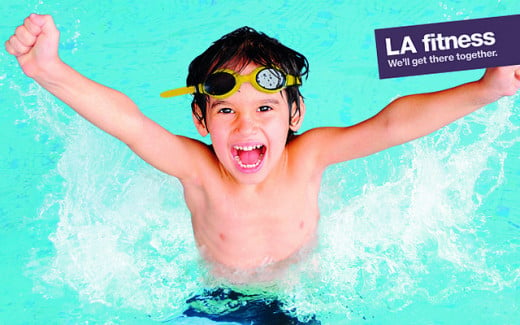
General Adaptation Theory
According to Posen (2000) Hans Seyle's General Adaptation Theory describes the different sources of stress in our lives and how they all, regardless of the “stressor,” produce the same symptoms in our bodies. The reaction that our bodies have is caused by a build-up of stress hormones called cortisol and epinephrine that are released in times of stress or anxiety (Dr. D. Johnson, personal communication, November 4, 2007). Selye's theory says that when this happens, this is what leads to illness. According to an article called Cortisol and Stress: How to Stay Healthy, written by Dr. Elizabeth Scott (2006),
Prolonged levels of cortisol in the bloodstream (like those associated with chronic stress) have been shown to have negative effects such as impaired cognitive performance, suppressed thyroid function, blood sugar imbalances such as hyperglycemia, higher blood pressure, lowered immunity and inflammatory responses in the body as well as other health consequences, [and] increased abdominal fat. (emphasis mine)
Vail (2006) states many times throughout her article that fitness and academic achievement are correlated in a sense that “regular exercise can alleviate stress, anxiety, and depression—problems that can affect school performance” (p.19). The American Council on Exercise (n.d.) appears to agree, because in their article Exercise Can Help Control Stress, they state “People who exercise regularly will tell you they feel better. . . People have been less jittery and hyperactive after an exercise session. . . People who exercise regularly tend to eat more nutritious food. And it's no secret that good nutrition helps your body manage stress better.”
Chosen Research Design
For this research project, the Quasi-Experimental Design #3: The Regression-Discontinuity Design seems most appropriate. It would be preferable to use an experimental design; however, with the difficulties in choosing children randomly from each grade level, K through 12, from each school that would benefit the most from the treatment offered through the study, the quasi-experimental design fit best. The sampling will also be determined by the number of subjects that will give consent to participate in the study.
A mixture of qualitative and quantitative measurements will be used to best represent the data obtained during the study. Qualitative methods will be used because students within the school are being observed and interviewed for thoughts, feelings about themselves and school, food intake, level of physical activity, grades and stressors in their lives. Quantitative methods will be used to assign students to treatment using a cutoff score on a pretreatment variable, measure current BMI levels at the time of acceptance and any changes that occur as well as measure and compare standardized test scores throughout the study. Posttest scores will also be measured and compared.
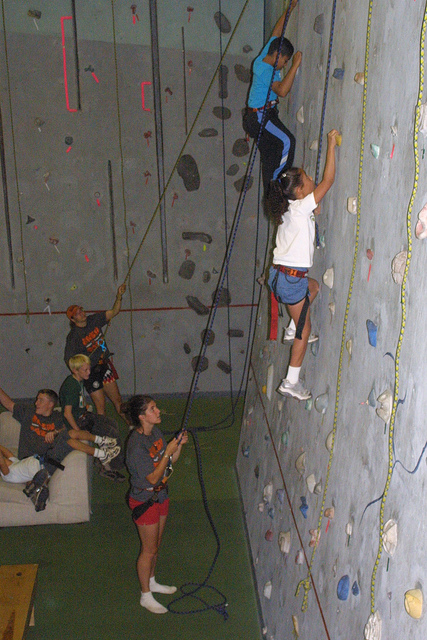
Definition of Core Terms
The following definitions will help the reader understand terms written throughout the study:
Academic achievement – an increase in academic scores gained through effort.
Stress – (in relation to the surrounding research) the body's negative reaction to a change that affects one physically, mentally and/or emotionally.
Physical fitness - the ability of one’s body to function efficiently and effectively without injury, to be healthy physically, to resist disease, and to cope with emergency situations positively.
Healthy lifestyle – the combination of sufficient sleep, a healthy diet, lower stress levels, and physical fitness in one’s life.
Standardized testing – testing that is designed to be administered in a uniform manner, primarily in kindergarten through high school, that strives to evaluate learning according to a set of predetermined criteria, under controlled conditions.
Cortisol - is the body's primary stress hormone that the brain releases in response to physical or emotional stress.
Significance of Proposed Study
In future work, I would like to research for myself, through several self-led studies, the effects on a fitness program in classrooms at all levels in elementary school. I would like to take this into private schools and have grade level teachers try out a consistent routine of using physical activity with their students throughout the school year to determine the correlation. Of course I would need an experimental group and a control group, therefore it would be ideal to use teachers with more than one class coming to them through the course of the day.
In that way they could use the program with one class and not the other and therefore reduce the number of variables needing to be considered by having the control and experimental groups with different teacher personalities, teaching styles and classroom management.
I would also like to take the research in even closer to see what effect teacher personalities, teaching styles and classroom management techniques had on student achievement in different classrooms. There are so many different variables that student achievement and behavior in the classroom, many including situations and issues that we cannot control.
Maybe if we could get closer and determine the correlation between some of these other variables, we could not only determine why school districts are focusing so tightly on fixing the teachers rather than on the students themselves, and possibly get closer to finding some causation between physical activity and academic achievement. If research could somehow prove causation between the two, maybe the school districts or at least the states would take it more seriously and something dramatic would change the face of education in the way of student health.

Unaddressed Benefits
While this study did cover the effects of stress and the many benefits of physical exercise, it did not cover the role it plays in instruction and its effectiveness. Especially in elementary school some of the best learning involves hand and body movements and repetition. (Learning is Not All in Your Head 2005). These not only help the child commit the information to memory by giving them something novel to relate the information to, but the children have a good time while learning and are therefore are more receptive to what you are teaching. Learning “takes place throughout your entire body” (Learning is Not All in Your Head 2005).
“Every nerve and cell is a network contributing to our intelligence and our learning capacity . . . improving overall concentration in class” (Beare 2007). If learning is fun and interesting, the students want to pay attention, but like explained above, this physical activity also boosts heart rate, blood flow, energy, immunity, amongst many other things in their bodies, helping them to be alert and focused and getting them motivated.
Physical Fitness and Standardized Academic Achievement Tests
At the University of Illinois at Urbana-Champaign a dual-study was completed first using 500 elementary school students and then comparing them to groups of physically fit and sedentary adults and children in order to “examine the relationship between age, physical fitness level, and attention and memory” (Warner 2004). Within this study, the researchers first compared the achievement of the 500 elementary school children on their standardized tests with their fitness levels to attempt to find a correlation between the two, of which was found a positive correlation.
To further enhance this study, they then compared groups of physically fit and sedentary adults and children in a “visual oddball test” where they were shown images, one more often than the other. The candidates were asked to push a button when they saw the image that was much less frequently shown in order to gage reaction times, task completion, and even brain power used in each activity. The results from this second study were similar to the initial study. According to Warner (2004) it was found that “physically fit children devoted more brain power and resources towards identifying the stimuli than adults or sedentary children.”
These same children and the adults “were faster and more accurate” than the sedentary children when it came to completing the task given. Finally the reaction times of the fit children were much faster than the sedentary children. (Warner 2004) Overall, fewer errors were made by those children considered physically fit than those that were not. The main purpose of this study from the standpoint of the researchers was simply to “gain credibility and instructional time” (Warner 2004) for physical fitness programs.
This study was not very clear in how it chose its student and adult groups, why exactly the adults were included in the study, or how this specifically relates to promoting physical education classes. It could have been a much better study if they had been more thorough in their explanations of why they chose to do the study the way they did and how this specifically relates to physical education in schools.
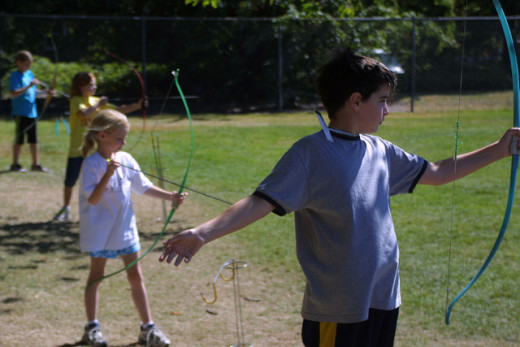
Academic Benefits and Physical Education
In this study the research sought to show that physical education was not taking away from instructional time, but contrary to typical views, they wanted to show that the addition of more hours into the program would actually boost achievement in all subject areas and even improve test scores. This is exactly what these researchers accomplished in their study. The study was performed in Ontario, Canada in the town of Trois Rivieres with 546 primary age school students. With these students the researchers added and additional five hours per week to their physical education schedule along with their regularly scheduled physical education classes.
However, they had to take time away from the other subject areas in order to achieve this goal, “with the exception of English” (Priest 1993). This study lasted for five years, comparing the subject area grades and achievement in physical education standards with those students of the same grade not involved in the additional physical education hours. At the conclusion of the study, those children with the extra physical education hours consistently had higher academic achievement in subject areas and in physical education. (Priest 1993)
This study filled in some of the gaps from the previous study. They showed direct correlation to physical education classes by showing that the addition of extra physical education in liew of subject area classes actually benefited the students involved as a whole. I would have liked to know how the stress levels of the students involved in the extra hours of physical education affected. I can only assume that, with all of the other research that has been done in this area, that one of the factors in the rise in academic achievement would have been reduced stress levels due to the time out of the classroom.
The FITNESSGRAM
In this study, completed by the California Department of Education in 2004, amongst all fifth, seventh and ninth graders in California public schools, researchers aimed to find the correlation between academic achievement and physical fitness. These fitness scores were compared to their scores on the Stanford Achievement Test.
Grissom (2005) states, “In February 1996, the California State Board of Education designated the FITNESSGRAM as the required physical fitness test to be administered to California students.” With special accommodations, those students not able to complete the test were to be given as much of the test as they could handle, and those students with special needs were given alternative options so to give them the best opportunity to complete it as possible. The test measured five aspects: “1) aerobic capacity, 2) body composition, 3) trunk strength, 4) upper body strength, and 5) flexibility” (Grissom 2005).
Researchers found that as a student’s fitness score improved so did their test scores. “This relationship appeared to be stronger for females than males and stronger for higher socioeconomic status than lower SES students” (Vail 2006). They also found that students who scored higher on the standardized test were also more physically fit than the students who scored lower. Grissom (2005) wanted to be clear that these results do not prove that fitness improves academic scores, only that there’s a positive correlation.
This study also added to the first study in that not only did they seek the correlation between academic achievement and physical fitness levels, but they actually went into the physical education classes to receive data on what exactly was taking place in physical education and testing their performance in that class. I would still like to know more about the stress levels of these students over the course of the school year and if that had an impact of student achievement.
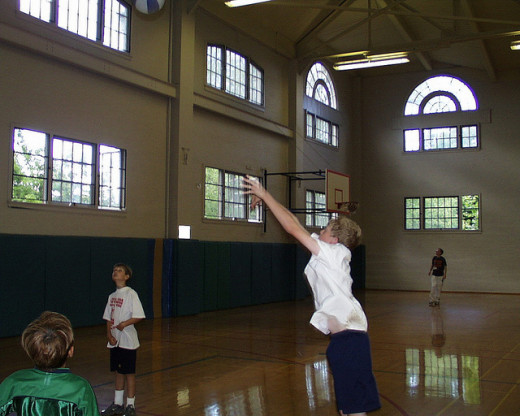
Math and Aerobic Fitness
Professor Darla Castelli and colleague Charles Hillman at the University of Illinois conducted a study to find the association between math and aerobic activity. They used children ages 8, 9, and 10 in their study and compared their fitness scores to the Illinois Standards Achievement Test as well as five to seven different cognitive tasks that they created in order to show the correlation between health and academic scores.
Not only did they find their positive correlation between the two, they also discovered that children that had a higher BMI had lower test scores and scored lower on the cognitive tasks. “’It’s common sense,’ says Castelli. ‘We think that children who are healthier are more ready to learn. If you have a higher BMI, you are not as prepared to learn’” (Vail 2006).
ADHD and Exercise
In this study, at the direction of Mike Wendt, superintendent of Wilson Central School District, researchers at the Buffalo University in New York were looking at the association between physical activity, concentration and focus. They began their study looking at children with ADHD and putting them through a six-week exercise course. The course consisted of getting the heart rate of these children “up to 135 to 175 beats a minute for 20 minutes a day, five days a week” (Vail 2006).
They saw a dramatic change in behavior after the six-week course due to endorphins, a natural hormone in the body, being released into their systems and calming them down. With the success of this study, the school district won a Physical Education Program grant for $250,000, from which they built a series of fitness centers at the school. These are now being used for at-risk students and student with severe behavior problems to help them focus and relieve stress.
“You might have the best lesson on the planet, but if [the students] are stressed out, it will bounce off of them” (Vail 2006). I added this study into the mix simply because I thought it was a great study that showed the many benefits of physical fitness and it was as close as I could come to showing the calming and de-stressing effects of physical activity. This was a very well done study whose benefits need to be spread throughout the school districts across the country. This would be a much more productive way to help these children in our school.
Researcher Assumptions
- It will be difficult to obtain schools, classrooms, students, and even parents of interested students that are willing to participate in the research study.
- There will be too much data at the end and much of it will not be used.
- There will be a big positive difference between those students that received the treatment and those that did not.
- An additional side study (one for those students with a healthy BMI and one for those students with an unhealthy BMI) will be needed to be able to accurately compare results.
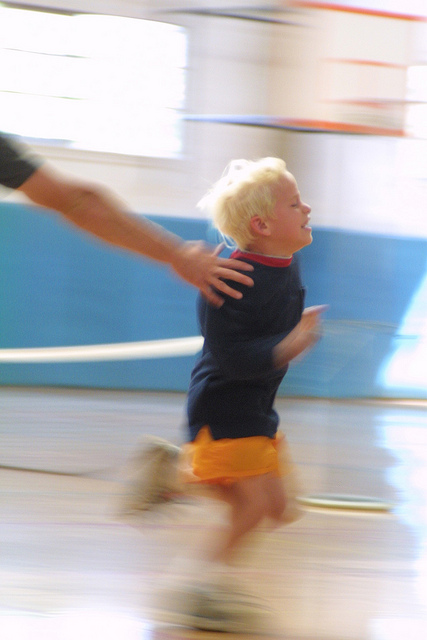
Limitations of Proposed Study
I have had a difficult time finding a great deal of information, by the way of research studies, available tying stress into studies completed on fitness and academic achievement. While there is plenty of research on the topic of stress and how physical fitness relieves the symptoms of stress allowing the person to feel better, be able to concentrate, and have more motivation, I could not find studies specifically addressing stress. Studies including stress along with academic achievement and fitness would have strengthened the support for my paper.
Another limitation that may occur in this study would be finding people that will consent to participate in the study. This includes principals, teachers, students, and especially the parents of those students interested. It is also a concern that this may be too much work for one person to handle alone. Willing and reliable assistants will be needed to help with gathering data from students, teachers, and parents.
Obtaining accurate information from parents and students involved in the study is yet another concern. There will be a great deal of data being gathered using many different methods to ensure that a clear picture of results is given at the end of the research study, but that does not mean that all data gathered will be reliable. The fear is that parents will misrepresent the goings on at home and that students will misrepresent the information they give in relation to diet and exercise at school and at home.
The Solution
When it comes to academic achievement in schools, the school districts have laid their focus on bringing up test scores. They have been directing their resources towards teacher education, curriculum, test-based instruction, even in the lower grades, and even school spirit in relation to testing (t-shirts, signs, buttons, fundraisers, etc.).
For all of their efforts, test scores have not changed in the way they were looking for when they started. The focus needs to be and always should have been on the children themselves. Granted, instruction, teachers, school environment, and the like have to be taken into account, but a lack of focus on the children themselves is going to get results that show a lack of motivation and improvement on the part of the children.
Much research has shown the main concerns when it comes to student achievement, motivation, and effort; mainly stress and health. One seems to go hand in hand with the other. Students are receiving stress from all areas of their lives, whether it is good stress or bad stress, and with the lack of nutritious foods and physical activity throughout the day on a daily basis, these will never improve. Prolonged and exacerbated stress has been proven to cause multiple health problems in relation to children such as obesity, Type II diabetes, asthma, and a number of others.
Meanwhile, the solution has been there this whole time, a minimum of 30 minutes of physical activity a day and a healthful diet. Yet, instead of promoting physical education and recess, school districts are trying to remove these programs in an attempt to provide for more instruction time to prepare these students for their standardized tests.
With the answer right in front of their eyes, it’s a wonder school districts or even the state have not kept up with research and caught on to what could help them very quickly and productively reach their goals. Fixing the teachers and the curriculum will not raise the scores on tests taken by the students; at least not alone. “It’s critical that school boards understand that the best thing they could do for the kids’ grade point averages and test scores is to ensure kids are healthy” (Vail 2006).
References
American Alliance for Health, Physical Education, Recreation and Dance. (2001). Status of Physical Education in the USA: Shape of the Nation Report. Reston, VA; National Association for Sport and Physical Education.
American Council on Exercise (ACE). (n.d.). Exercise Can Help Control Stress. Retrieved November 4, 2007 from http://www.firstpath.com/exercise-controls-stress.html
Bandura, A. (1995). Exercise of personal and collective efficacy in changing societies. In A. Bandura (Ed.), Self-efficacy in Changing Societies. (pp. 1-45). New York: Cambridge University Press.
Beare, K. (2007). Brain Gym Exercises. Retrieved November 23, 2007 from http://esl.about.com/od/englishlessonplans/a/braingym.htm
Byrd, J. (2007). The Impact of Physical Activity and Obesity on Academic Achievement Among Elementary Students. Retrieved November 23, 2007 from the Rice University, Connexions Project Web site: http://cnx.org/content/m14420/latest/
Grissom, J. B. (2005, February). Physical Fitness and Academic Achievement. Journal of Exercise Physiology online, 8, Number 1, 11-25. Retrieved December 3, 2007, from http://www.asep.org/files/Grissom.pdf
Hansen, C. J., Stevens, L. C., & Coast, J.R. (2001, July). Exercise Duration and Mood State: How Much is Enough to Feel Better? Health Psychology, 20, 4, 267-275.
Health Benefits of Physical Activity. (2004). Retrieved December 16, 2007 from http://www.medicinenet.com/script/main/art.asp?articlekey=10074
Huitt, W. (2003). A transactional model of the teaching/learning process. Educational Psychology Interactive. Valdosta, GA: Valdosta State University. Retrieved October 27, 2007, from http://chiron.valdosta.edu/whuitt/materials/tchlrnmd.html
Learning is Not All in Your Head. (2005). Retrieved November 23, 2007 from http://www.bizmanualz.com/information/2005/06/29/learning-is-not-all-in-your-head.html
Nutrition, Physical Activity and Academic Achievement. (n.d.).
Posen, D. (2000). The Principles of Stress.
Priest, L. (1993). The Case for Physical Education. Retrieved November 3, 2007 from Bonnie’s Fitware, Inc. Web site: http://www.pesoftware.com/Resources/whype.html
Rosick, E. R. (2005, December). Cortisol, Stress, and Health. Life Extension Magazine. Retrieved December 16, 2007 from http://www.lef.org/magazine/mag2005/dec2005_report_cortisol_01.htm
Ruiz, R. (2007). America’s Most Obese Cities.
Scott, E. (2006). Cortisol and Stress: How to Stay Healthy. Your Guide to Stress Management. Retrieved November 4, 2007 from http://stress.about.com/od/stresshealth/a/cortisol.htm
U.S. Department of Education. (2007). Retrieved December 15, 2007 from the No Child Left Behind Web site: http://www.ed.gov/nclb/landing.jhtml
Vail, K. (2006, March). Mind and Body. American School Board Journal, 30-33.
Warner, J. (2004). Fit Children May Make Better Students. in Buck, S. Journal of Sport & Exercise Psychology, 26. Press release, University of Illinois at Urbana-Champaign.
Wilson, G. (2005). Exercise and Stress Part 1: Defining Stress. Retrieved November 4, 2007 from the ABC Body Building Web site: http://www.abcbodybuilding.com/exercisestress1.pdf
Quick Poll
How did you like this essay? Was it helpful at all?
Other Articles You Might Like
- Fun Activities for Your Kids When It's Too Cold to G...
So it’s getting too cold outside to play for too long. Sure playing in the snow or in the freezing weather can be great for a little while, but especially if you have to be out there watching them ... - Fun Activities for Families During the Holidays
Visiting family over the holidays can be a very positive experience, a very negative experience, or even a mystery every year. I realize that when family gets together every year, it can be stressful, - Free Activities to Do With Your Kids Anytime
When you have kids at home, whether it’s just on the weekends, or you’re a stay at home mother with toddlers, the need for you to get out of the house and entertain them can get desperate. - Fun Fitness for Kids: Getting Exercise in Unexpected...
Children are like adults - they can quickly learn to dread the idea of being in one place for 30 minutes for an exercise class. Why not use some of my unique methods for squeezing in exercise to kick-start your little one's fitness and health?
© 2013 Victoria Van Ness








